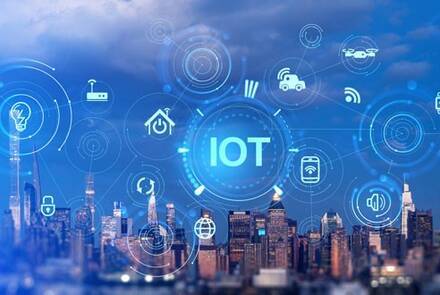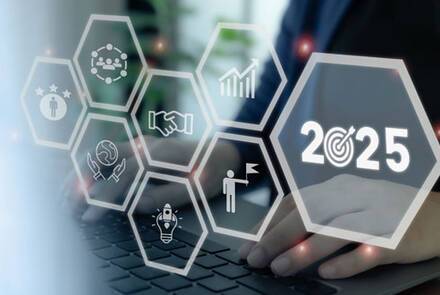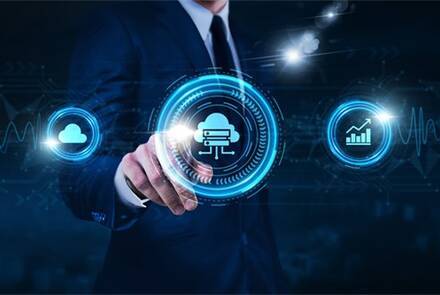Artificial Intelligence (AI) in 2025
As we progress through 2025, artificial intelligence (AI) continues to evolve, driving innovation across various sectors. Building upon the foundations laid in previous years, several key trends have emerged, reshaping industries and influencing societal norms. This article delves into these trends, offering a comprehensive analysis of their implications and applications.
- Advanced Natural Language Processing (NLP) and Conversational AI
In 2025, NLP technologies have reached new heights, enabling AI systems to comprehend and generate human language with unprecedented accuracy and nuance. Conversational AI agents are now capable of engaging in complex dialogues, understanding context, and exhibiting emotional intelligence. These advancements have revolutionized customer service, education, and entertainment, providing users with more personalized and intuitive interactions.
Key Developments:
- Contextual Understanding: AI models can maintain context over extended conversations, allowing for more meaningful and coherent interactions.
- Emotional Intelligence: Integration of sentiment analysis enables AI to detect and appropriately respond to human emotions, enhancing user experience.
- Multilingual Capabilities: Improved language models facilitate seamless communication across different languages, breaking down barriers in global interactions.
- AI in Healthcare: Personalized Medicine and Predictive Analytics
The healthcare sector has witnessed significant AI-driven transformations, particularly in personalized medicine and predictive analytics. AI algorithms analyze extensive datasets, including genetic information and patient histories, to tailor treatment plans to individual patients. Predictive analytics assist in early disease detection and prognosis, improving patient outcomes and optimizing resource allocation.
Key Developments:
- Genomic Analysis: AI facilitates the interpretation of complex genomic data, identifying potential genetic predispositions and informing preventive strategies.
- Remote Monitoring: Wearable devices equipped with AI monitor patient vitals in real-time, alerting healthcare providers to potential issues before they escalate.
- Drug Discovery: Machine learning models expedite the drug discovery process by predicting molecular interactions and potential therapeutic effects.
- Autonomous Vehicles and Smart Transportation Systems
AI continues to drive advancements in autonomous vehicles and smart transportation. Enhanced computer vision and sensor fusion technologies have improved vehicle navigation and safety. Urban areas are increasingly adopting AI-driven traffic management systems, reducing congestion and emissions.
Key Developments:
- Vehicle-to-Everything (V2X) Communication: AI enables vehicles to communicate with each other and infrastructure, enhancing situational awareness and coordination.
- Predictive Maintenance: AI systems predict component failures before they occur, reducing downtime and maintenance costs.
- Ride-Sharing Optimization: AI algorithms optimize ride-sharing routes and matching, improving efficiency and user satisfaction.
- AI-Driven Cybersecurity: Proactive Threat Detection
With the increasing complexity of cyber threats, AI has become integral to cybersecurity strategies. AI-powered systems analyze network traffic in real-time, identifying anomalies and potential breaches before they cause harm. These systems adapt to evolving threats, providing robust and proactive defense mechanisms.
Key Developments:
- Behavioral Analytics: AI assesses user behavior patterns to detect deviations that may indicate compromised accounts or insider threats.
- Automated Incident Response: Upon detecting threats, AI systems can autonomously initiate containment and remediation actions, reducing response times.
- Threat Intelligence Integration: AI aggregates and analyzes global threat intelligence, enhancing the ability to anticipate and defend against emerging threats.
- Ethical AI and Regulatory Frameworks
As AI becomes more pervasive, ethical considerations and regulatory frameworks have gained prominence. Efforts are underway to ensure AI systems are transparent, fair, and accountable. Regulatory bodies are establishing guidelines to govern AI deployment, addressing issues such as bias, privacy, and the societal impact of automation.
Key Developments:
- Explainable AI (XAI): Techniques that make AI decision-making processes transparent and interpretable to users and regulators.
- Bias Mitigation: Strategies to identify and reduce biases in AI models, promoting fairness and equity.
- Data Privacy Compliance: AI systems designed to adhere to stringent data protection regulations, ensuring user information is handled responsibly.
- Emergence of Agentic AI
Agentic AI refers to systems capable of autonomous action to achieve defined objectives without constant human oversight. In 2025, these AI agents are employed across various domains, from personal assistants managing schedules to industrial robots optimizing manufacturing processes. Their ability to operate independently enhances efficiency and allows humans to focus on higher-level tasks.
Key Developments:
- Autonomous Decision-Making: AI agents assess situations and make informed decisions aligned with their objectives.
- Adaptive Learning: These agents learn from interactions and experiences, continuously improving their performance.
- Cross-Domain Application: Agentic AI finds applications in sectors ranging from finance to healthcare, demonstrating versatility.
- AI in Education: Personalized and Adaptive Learning
The education sector benefits from AI through personalized and adaptive learning platforms. AI analyzes student performance and learning styles to tailor educational content, pacing, and assessments, fostering improved engagement and outcomes.
Key Developments:
- Intelligent Tutoring Systems: AI provides real-time feedback and assistance, emulating one-on-one tutoring experiences.
- Curriculum Customization: Educational programs adapt to individual progress, ensuring mastery of concepts before advancing.
- Predictive Analytics for Student Success: AI identifies students at risk of falling behind, enabling timely interventions.
- AI-Powered Creativity and Content Generation (continued)
Key Developments:
- Text-to-Image and Text-to-Video Models: Tools like DALL·E, Midjourney, and Sora are transforming industries such as marketing, entertainment, and education by rapidly generating realistic visuals from simple prompts.
- AI Music and Sound Design: AI platforms now compose music in various genres, support adaptive soundtracks for games and film, and generate voiceovers with emotional modulation.
- AI Writing Assistants: Beyond grammar checks, AI tools now co-write articles, stories, and scripts, provide research summaries, and adapt content for different tones, audiences, and platforms.
AI is no longer just a tool for efficiency; it is becoming a partner in the creative process, enabling creators to push boundaries and explore new modes of expression.
- AI for Environmental Sustainability
AI’s ability to process vast amounts of data has proven invaluable in addressing climate change and promoting environmental sustainability. In 2025, AI is powering a new generation of solutions aimed at protecting ecosystems, optimizing energy usage, and fostering sustainable practices.
Key Developments:
- Climate Modeling and Forecasting: AI models simulate climate scenarios with improved accuracy, helping policymakers and researchers plan effective interventions.
- Precision Agriculture: AI systems optimize irrigation, pesticide use, and crop yield forecasts, reducing environmental impact and conserving resources.
- Energy Grid Optimization: AI balances energy loads and integrates renewable energy sources into power grids, reducing reliance on fossil fuels.
- Carbon Footprint Analytics: Businesses are leveraging AI to measure, report, and reduce their carbon emissions through predictive analytics and automation.
These applications demonstrate how AI is becoming central to the global push toward achieving the UN’s Sustainable Development Goals.
- The Rise of Multimodal AI
Multimodal AI systems process and integrate multiple types of input—such as text, images, audio, and video—simultaneously, making them more capable and intuitive.
Key Developments:
- Cross-Modal Understanding: AI can now associate voice commands with visual elements or interpret gestures alongside speech, enhancing accessibility and human-computer interaction.
- Robotics and Human-AI Collaboration: Multimodal models empower robots to perceive their environments more like humans, enabling smoother collaboration in industries like manufacturing, logistics, and healthcare.
- Enhanced Content Search: Multimodal search engines allow users to search with a combination of voice, image, and text, greatly improving relevance and usability.
Multimodal AI is driving a paradigm shift from narrow, single-channel intelligence to more holistic, generalized capabilities.
Conclusion: The Future of AI in 2025 and Beyond
AI’s evolution in 2025 is characterized by rapid advances, deepening integration into everyday life, and growing emphasis on ethical and sustainable implementation. From personalized healthcare and smart cities to autonomous agents and creative collaboration, AI is transforming how we live and work.
However, with these advancements comes the responsibility to deploy AI responsibly. Governments, businesses, and communities must work together to ensure AI is used ethically, equitably, and transparently.
As we look ahead, the future of AI is not only about smarter machines—it’s about smarter societies. Organizations that embrace this vision and invest in AI readiness, governance, and innovation will be best positioned to thrive in the years to come.
References
- OpenAI – Updates on GPT models and multimodal AI (e.g., ChatGPT, DALL·E, Sora)
Website: https://www.openai.com - Google DeepMind – Research and advancements in reinforcement learning, multimodal AI, and generative models
Website: https://deepmind.google - World Health Organization (WHO) – Applications of AI in healthcare and disease forecasting
Website: https://www.who.int - Nature & Nature Medicine Journals – Peer-reviewed studies on AI in genomics, diagnostics, and precision medicine
Website: https://www.nature.com - McKinsey & Company – Reports on AI adoption across industries and its economic impact
Article: The State of AI in 2024
Website: https://www.mckinsey.com - Stanford Institute for Human-Centered Artificial Intelligence (HAI) – Annual AI Index Report
Website: https://hai.stanford.edu - MIT Technology Review – Trends in AI governance, regulation, and explainability
Website: https://www.technologyreview.com - IBM Research – White papers on explainable AI (XAI), bias mitigation, and ethical frameworks
Website: https://research.ibm.com - Gartner – Technology trend forecasts, including agentic AI and AI in cybersecurity
Website: https://www.gartner.com - Accenture – Insights on AI-driven business transformation and sustainability use cases
Website: https://www.accenture.com - United Nations (UN SDGs) – Guidelines and reports on technology’s role in environmental sustainability
Website: https://sdgs.un.org - National Institute of Standards and Technology (NIST) – AI risk management frameworks and cybersecurity practices
Website: https://www.nist.gov - World Economic Forum – AI policy developments and economic forecasts
Website: https://www.weforum.org - Tesla & NVIDIA Blogs and Press Releases – Progress in autonomous vehicles and smart transportation systems
Websites:- https://www.tesla.com
- https://www.nvidia.com
- OECD AI Observatory – International policy trends and AI governance standards
Website: https://oecd.ai
For more information about Trigyn’s Cloud Services, Contact Us.






